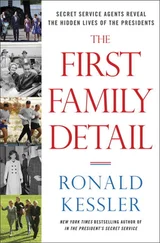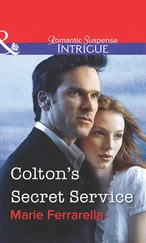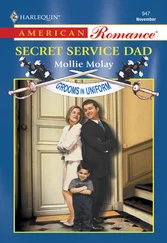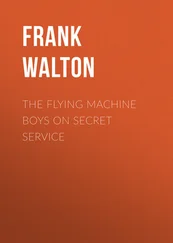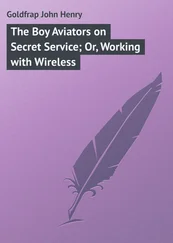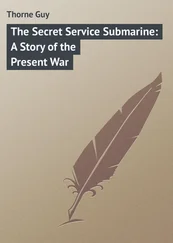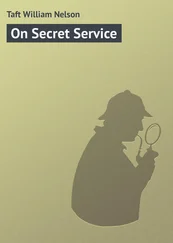At one A.M., Jarvis called the head of the advance team and briefed him. However, since the psychic seemed to have been wrong about what clothes Bush would be wearing and about where he would be sitting, they dismissed their concerns. Still, that morning before Bush left for Oklahoma, the head of the advance team informed detail leaders based in W-16 at the White House about the bizarre tale.
Jarvis then discussed the matter with the agent in charge of the motorcade. He asked if the motorcade route would take the president by an overpass. The agent said it would.
“Do you have an alternate motorcade route?”
“Sure. We always do,” the agent replied.
That morning, Air Force One landed. Known by the Secret Service code name Angel, Air Force One got its name when Dwight D. Eisenhower—code-named Providence—was president. Prior to that, the aircraft used by Franklin D. Roosevelt and Harry S. Truman had been known by air force designations. Because a flight controller mistook the president’s plane for a commercial one, the pilot suggested calling the plane the president was using Air Force One.
The current presidential plane is a Boeing 747-200B bubble top jumbo jet acquired in 1990 when George H. W. Bush was president. It has a range of 9,600 miles and a maximum cruising altitude of 45,100 feet. It cruises at six hundred miles per hour but can achieve speeds of seven hundred one miles per hour. In addition to two pilots, a navigator, and a flight engineer, the 231-foot-long plane carries Air Force One stewards and seventy-six passengers. The plane has eighty-seven telephones.
While the average 747 has 485,000 feet of electrical wire, the presidential plane has 1.2 million feet, all shielded from the electromagnetic pulses that would be emitted during a nuclear blast. Near the front of the six-story-high plane, the president has an executive suite with a stateroom, dressing room, and bathroom with shower. The president also has a private office near the stateroom and a combination dining room and conference room. Toward the back are areas for the staff, Secret Service, guests, and the press.
Under Federal Aviation Administration regulations, Air Force One takes precedence over all other aircraft. When approaching an airport, it bumps other planes that preceded it into the airspace. Before it lands, Secret Service agents on the ground check the runway for explosives or objects such as stray tires. Generally, other aircraft may not land on the same runway for fifteen or twenty minutes before Air Force One lands.
As Bush walked out to the ramp, Jarvis stared at him in amazement. Bush was not wearing a suit. He had on an outdoor jacket and an open-collar shirt, just as the psychic had said he would. Jarvis exchanged glances with the advance leader, who had a shocked look on his face. Then Bush walked down the steps and got into the limousine’s right side, his usual position. Jarvis started to relax. But after giving a short speech in Enid, Bush invited some friends to sit with him in the limo for the drive back to the airport. They got in first—on the right side. So Bush walked around the limo and sat down on the left side behind the driver. Again, the psychic had been right.
The advance leader decided the psychic could not be ignored. Never mind if anyone thought they were crazy. Better safe than sorry, he and Jarvis thought.
The advance leader ordered the motorcade to take the alternate route, which did not go by the overpass. No harm befell Bush.
The president was never told what had happened.
19

Eagle
SECRET SERVICE AGENTS refer to what they call Clinton Standard Time. That is a reference to the fact that Bill Clinton—code-named Eagle—is often one to two hours late. To Clinton, an itinerary with scheduled appointments was merely a “suggestion,” former agent William Albracht says.
Sometimes Clinton was late because he was playing a game of hearts with his staff. Other times he ignored his schedule because he wanted to chat with a janitor or hotel worker he happened to meet.
Back in May 1993, Clinton ordered Air Force One to wait on the tarmac at Los Angeles International Airport while he got a haircut from Christophe Schatteman, a Beverly Hills hairdresser whose clients have included Nicole Kidman, Goldie Hawn, and Steven Spielberg.
“We flew out of San Diego to L.A. to pick him up,” recalls James Saddler, a steward on the fateful trip. “Some guy came out and said he was supposed to cut the president’s hair. Christophe cut his hair, and we took off. We were on the ground for an hour.”
While Clinton got his haircut on the plane, two LAX runways were closed. Because that meant all incoming and outgoing flights had to be halted, passengers were inconvenienced throughout the country.
The press reported that the haircut cost two hundred dollars, Christophe’s fee at the time for a cut in his salon at 348 North Beverly Drive. But Howard Franklin, the chief Air Force One steward, tells me Schatteman told him on the plane that his charge for the cut was five hundred dollars, equal to seven hundred fifty dollars today, adjusted for inflation. Staffers informed Franklin that someone at a Democratic fund-raiser paid it.
When he learned of the flight delays, Clinton expressed anger at his staff for arranging the haircut. But it was his hair that was being cut, and he had given the orders to delay takeoff. As president, he was aware that if Air Force One sat on a runway, air traffic would be halted.
Clinton White House staffers ardently tried to turn the fiasco into a plus. “Is he still the president of the common man?” White House communications director George Stephanopoulos was asked at his daily White House briefing. “Absolutely” he responded. “I mean, the president has to get his hair cut. Everybody has to get their hair cut. … I think he does have the right to choose who he wants to cut his hair.”
After Clinton’s inauguration, Franklin told Clinton’s advance people that “the key to being effective was planning.” That idea brought a vigorous retort. “They said, ‘We got here by being spontaneous, and we’re not going to change,’” Franklin recalls. Besides an aversion to planning, Clinton and his people brought with them the attitude that “the military were people who couldn’t get jobs,” Franklin says.
If Clinton was often late, Hillary Clinton could make Richard Nixon look benign. Everyone on the residence staff recalled what happened when Christopher B. Emery, a White House usher, committed the sin of returning Barbara Bush’s call after she had left the White House. Emery had helped Barbara learn to use her laptop. Now she was having computer trouble. Twice Emery helped her out. For that, Hillary Clinton fired him.
The father of four, Emery could not find another job for a year. According to W. David Watkins, a presidential assistant in charge of administration, Hillary was also behind the mass firings of White House travel office employees.
When Hillary found a hapless White House electrician changing a lightbulb in the residence, she began yelling at him because she had ordered that all repair work was to be done when the first family was out.
“She caught the guy on a ladder doing the lightbulb,” says Franette McCulloch, the assistant White House pastry chef. “He was a basket case.”
“When she’s in front of the lights, she turns it on, and when the lights are off and she’s away from the lights, she’s a totally different person,” says an agent who was on her detail. “She’s very angry and sarcastic and is very hard on her staff. She yells at them and complains.”
Читать дальше


